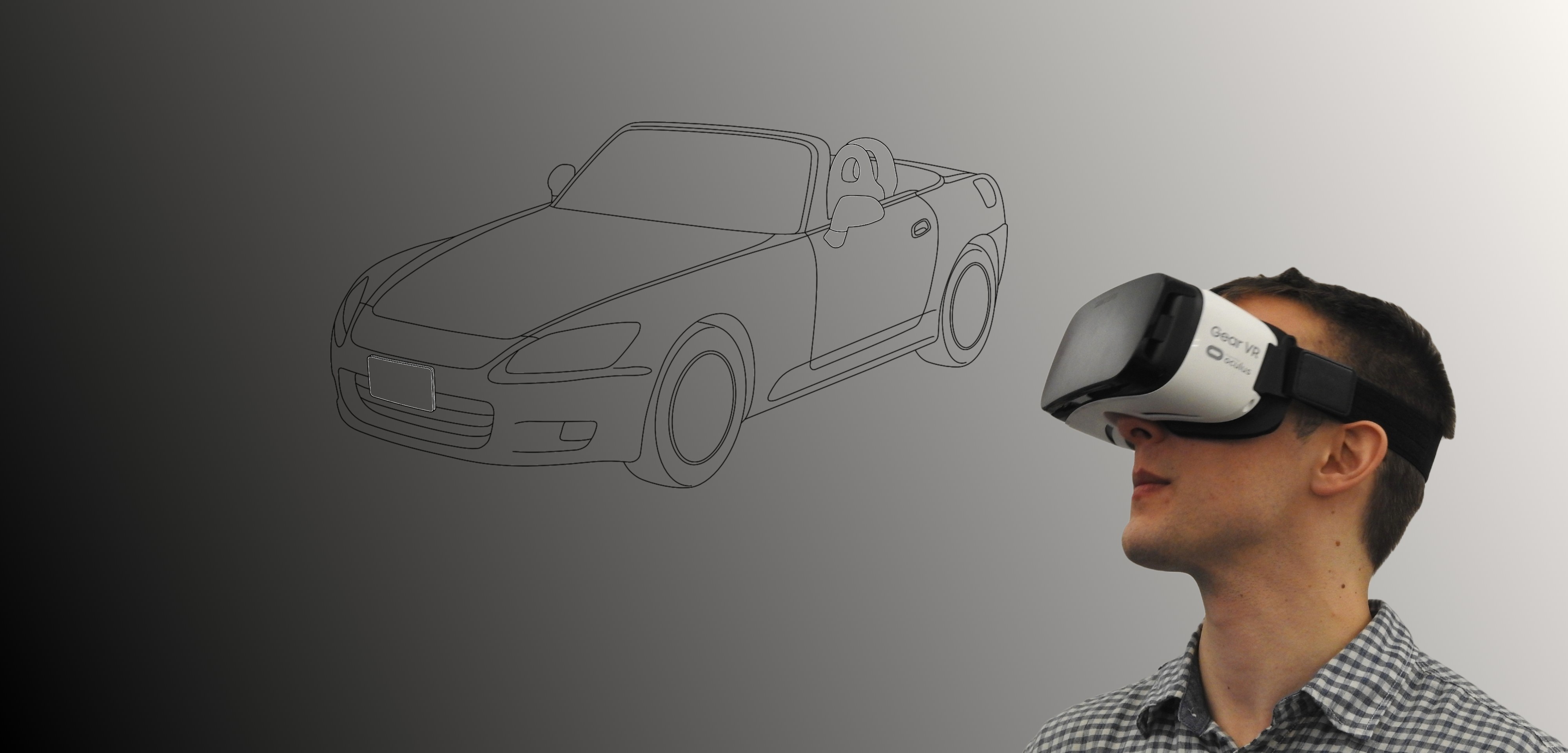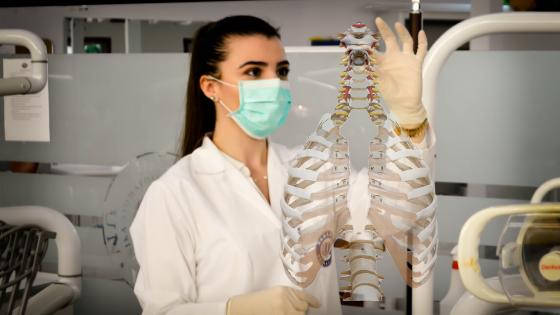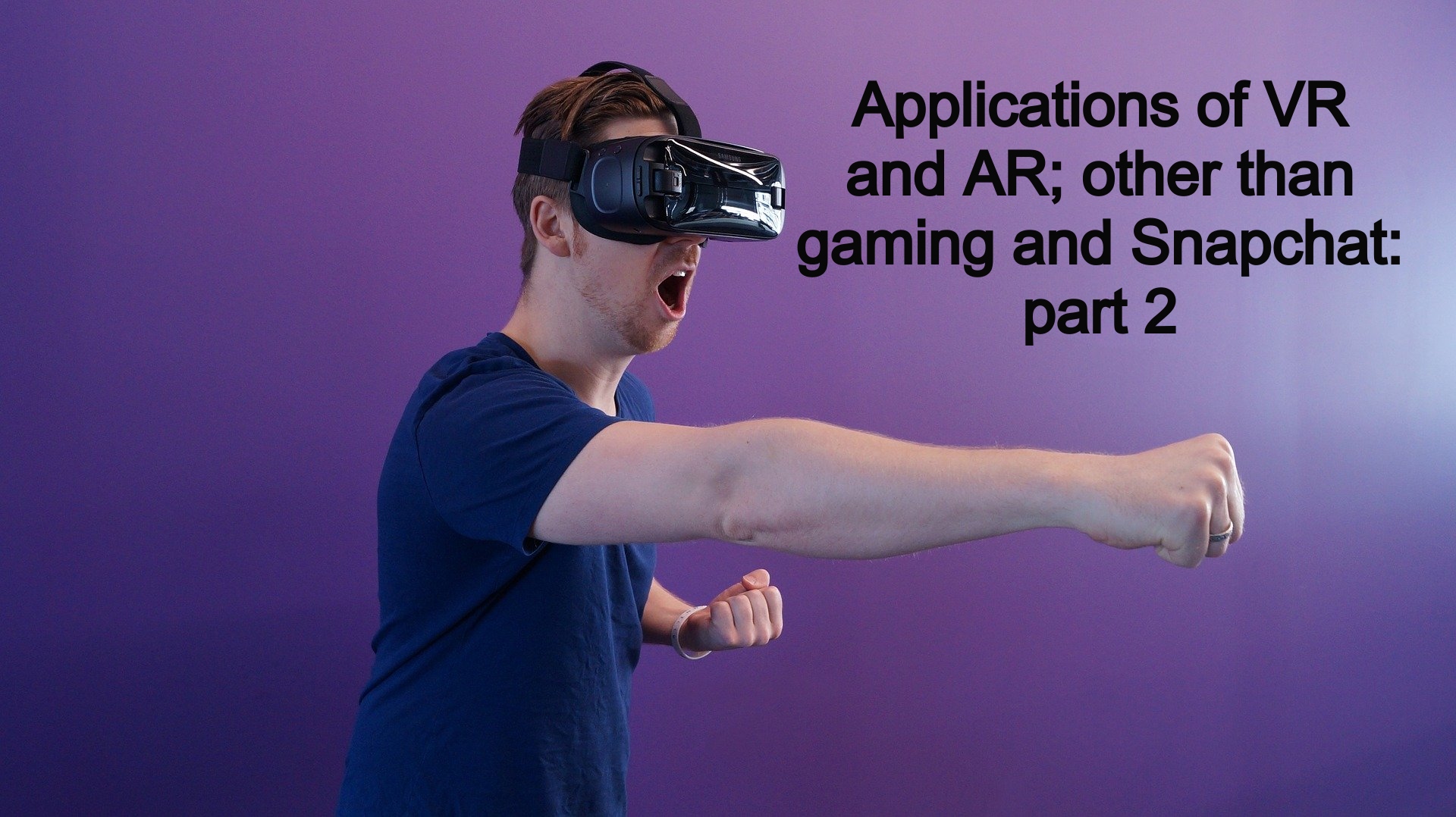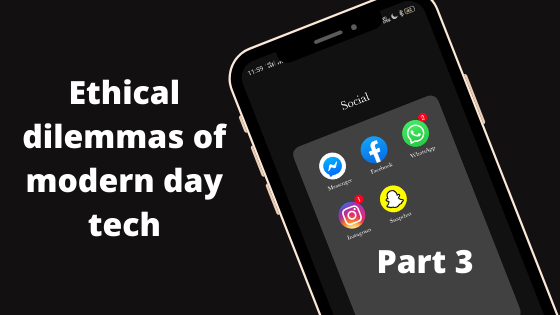AR in the automobile industry
The automobile industry has used augmented reality extensively.
Top brands like BMW, Mercedes, and many others have systems that show information such as vehicle speed, remaining fuel, etc. The 2020 Mercedes GLE450 has a forward-facing camera, and the screen overlays navigational prompts on a screen. Some even have navigation prompts projected onto the windshield in the form of an HUD. And even if many of us haven’t seen such systems in action, it’s safe to say that we’ve all become used to rearview systems with guidelines overlaid on the picture from the rearview cameras.
Besides HUDs, augmented reality tech is being used to improve a driver’s visibility that is hindered by the pillars on the car. Blindspots are always a problem while driving, and if you’re not careful it can cause car accidents. A team of Japanese researchers have developed a system that projects video streams from your blind spots to the interior of your car, basically making the pillars of your car transparent. Such a system can provide the driver with a better view of the surroundings, without overwhelming them.
Range Rover Evoque 2020 is one of the latest vehicles I’ve seen that has used AR in a rather unique manner. In this vehicle, using a combination of strategically placed cameras and really good software, you can look at how and where the tyres are on the ground as if you’re looking through a transparent bonnet. I can imagine the system being particularly handy while going off-road.
In the automobile industry VR and AR is not only being used in the final product but also in the design and production stages as well. Seymourpowell, a London based design studio, is using HTC Vive headsets along with their software to allow designers to draw and manipulate car designs in virtual reality. The designers can view their designs from different angles, and draw lines using the hand controls. Other designers or engineers in the team can view the design on monitors or even make changes in real-time if they’re wearing a headset. The technology also allows the users to get into the car, and see how everything appears from a driver’s perspective, thus preventing a beautiful design that is impossible to drive. The technology can potentially reduce the number of prototypes and make the design process faster. Engineers and designers at Ford are also exploring virtual reality for design. Using Microsoft Hololens, they’re exploring mixed reality which let them see the different components and even experience them. Using VR software Gravity Sketch they are now capable of creating a design in 40 hours that usually takes them months using traditional tools like CAD. Directly rendering in 3D reduces the time taken for design, and this allows designers much more time and flexibility to experiment with their design. Recently in a Wired article, Keanu Reeves(Yes, The Keanu Reeves), also spoke about using virtual reality while designing bikes in his custom bike shop. He spoke about how virtual reality lets him see the bikes before they are built.

AR has been used by Porsche in the later stages of automobile manufacture. The look and feel test for quality control, which is performed once the vehicle rolls of the assembly line, is now being performed using AR, which uses the camera from a tablet device to superimpose the CAD drawing of a component over the actual car so that the deviations are easily noticed. The app highlights any bumps or excessive gaps. Porsche is also using a similar technology in their production facilities, which overlays the issues onto the actual car using an overhead projector.
As autonomous vehicle technology is moving forward, industry experts are looking at AR as a way to engage the passengers once cars become capable of fully autonomous driving. Initially, systems may be used to make passengers more comfortable in a vehicle driven by a computer. For example, projecting what the car is seeing on to the windshields may make passengers more involved. But later on, it may move into entertainment systems to keep the passengers occupied in a Robo taxi. Almost all the concept cars shown in an auto show these days feature some form of VR or AR.
Augmented reality glasses.
Now this is one of those things that I really want. (Yeah, because of IronMan). I don’t think many of us have forgotten one of Google’s earliest adventures into AR with the Google Glass. Even though they were discontinued for the general public, they have found extensive applications in production facilities. They’re being used by workers for guiding them through complex assembly steps, and are claimed to have reduced production time by 25% in low volume productions. Glass enterprise edition 2 accepts voice commands, shows training videos, and lets you collaborate with your teammates through a live stream, allowing them to see what you’re seeing.
But seriously, how cool would it have been if we could access Google lenses though these Glasses? Focals by North seems like a good option if you feel like you missed out on Google Glass. With Focals, you will get glasses that are custom-fitted for you, for your prescription, and with a small holographic projector, you can see weather, messages, music info, etc in front of your eyes. And what I really loved was the discrete manner in which you can operate these glasses. Obviously, if you’re using gesture controls, you may look like IronMan, but you’ll also get strange looks from other people. But with these glasses, you also get a ring to put on your finger, which has a joystick-like arrangement. And unlike Google Glass, which draws the attention of onlookers with its weird build, Focals, from the outside looks just like an ordinary pair of glasses. For now, you need to walk into a showroom to get your measurements taken and all, but hopefully, they’ll develop a phone app in the near future, capable of taking the measurements.
Yeah, I really want AR glasses.
VR in healthcare
Companies like Osso VR are transforming how surgeons are taught and trained. Usually surgeons spend a lot of time as students before they’re capable of performing surgeries on their own. Because of the risks involved, training is done with the utmost care and at a slow pace. And because of the simple reason that patients needing the same conditions don’t come in for surgery all the time, particularly for rare diseases, surgeons simply don’t get the opportunity to prepare. The learning that a surgeon gets during his training period may depend on chance. And of course, in the case of rare surgeries, even experienced surgeons may be wading into unchartered waters.
But with VR a surgeon can practise the same surgery as many times as they want until they’re fully adept. This will allow them to be more confident and helps them learn new procedures or techniques much more quickly. And there’s no risk involved. This is exactly what Osso VR is doing. The system even provides analytics so as to get an objective evaluation of a surgeon’s skill, and a study showed that surgeons who trained using Osso VR performed twice as good as surgeons trained using traditional methods.

And in the case of rare surgeries, Immersive Touch has a promising tool. Using a patient’s CT and MRI, it can create a 3D virtual model of the patient body, allowing the surgeons and the doctor to gain a better understanding. Generally, the CT and MRI images are produced in the form of multiple images, each representing a slice of the region. But they’re all in 2D and the doctors have to mentally superimpose these images to get an idea of how they will actually look like. With Immersive Tech, there’s a lot less guesswork. And it’s not just viewing. Surgeons can plan and rehearse the entire procedure in VR before the actual surgery. By putting on the equipment, surgeons are transported to a virtual OR and can practise the surgery as many times as they want.
I can imagine a future where a doctor performs a surgery remotely, with the help of VR at the surgeon’s end and a robotic arm at the patient’s end.
Physical therapy is another area where VR really shines in healthcare. If you’ve ever had physical therapy or physiotherapy, you’ll know that it’s simply boooorringgg. And it hurts? Physical therapy is a proven way to recover from major injuries and it is a must, to get a full recovery. But it can go on for months or even years. Throughout the process, it’s not easy to stay motivated. What if instead of lifting weights repeatedly, or doing a boring movement over and over again, you can make things interesting using VR. Using VR, patients don’t have to perform those difficult exercises in a hospital wing. They can do the same thing on a beach or a garden. Companies like Neuro Rehab VR are bringing virtual reality to the world of physiotherapy.
A company named immersive health is transforming the lives of senior residents in a care home. Using VR, the senior citizens are able to go on nature walks and experience it as if they are there, which may otherwise be difficult for them.
And it’s not just for physical rehabilitation, VR can also be used for cognitive rehabilitation as well. A virtual environment can provide sufficient stimulus for the growth and development of the brain, for patients with cognitive impairments. Companies like Rewellio is using Occulus devices for improving the lives of stroke patients. Rebellion has included exercises in their app, which helps to improve concentration and cognition, as well as other physical exercises.
VR is also being used to help kids with autism. Floreo offers a VR platform to help kids overcome difficult situations in a risk-free manner. They have modules that teach a kid to cross the street, engage in small talk, attend a classroom and more.
The best part, on using VR for physiotherapy, is probably that patients could do this at their homes. When physiotherapy happens over a long period, it may not be easy for patients to travel to the clinics every day. But now they can do it in their homes.
Even though VR and AR has improved vastly, there’s still a lot of room for improvement. Most of the headsets are bulky and become uncomfortable after long periods of usage. Prolonged periods of usage can also cause motion sickness. And while some of the earliest systems explored sense of touch or even smell, most of the current ones are focused on visual and auditory stimulation. Maybe in the future we may even be able to experience touch and smell, with the development of VR suits. And if scifi movies are to be believed, we are yet to see a lot more applications for these systems.




